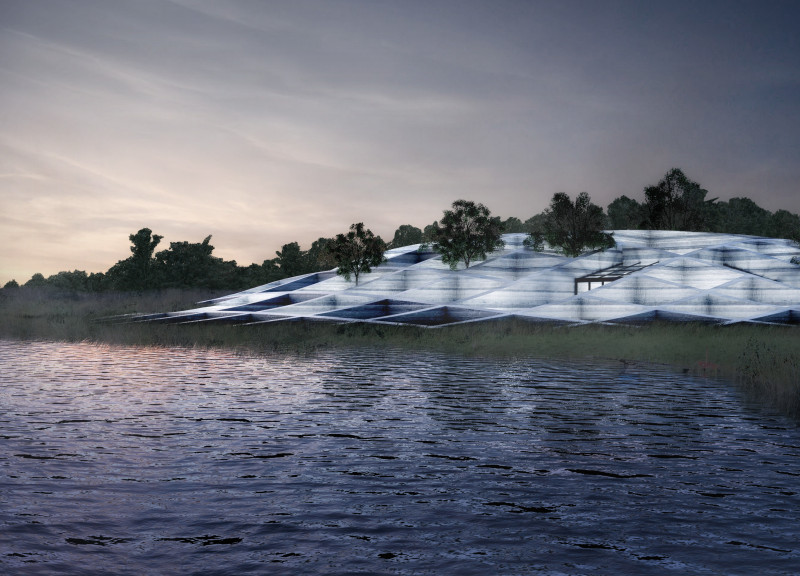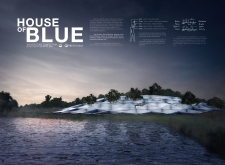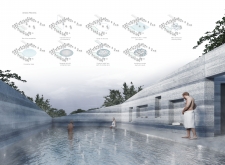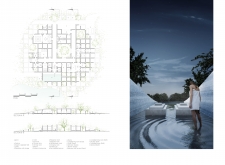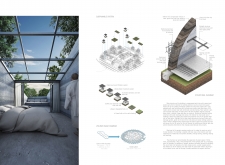5 key facts about this project
The House of Blue is a wellness destination designed to connect visitors with the healing properties of blue clay while reinforcing a deep connection to the natural environment. Set in the Latvian countryside, the project explores how architecture can awaken the senses and encourage mindful presence through tactile, visual, and spatial engagement.
Sensory Experience as Design Framework
The architecture is shaped around full sensory engagement. Daylight filters through strategic openings, and natural sounds wind through trees, and water movement enters through breathable facades. Blue clay, used both structurally and as a finish, offers a raw tactile surface, reinforcing touch as a therapeutic element. Together, these elements create immersive atmospheres that promote reflection and healing.
Spatial Arrangement and Flow
The layout is based on a flexible grid that structures public and private zones, including reception, dining areas, therapy rooms, and relaxation spaces, while maintaining visual and physical access to outdoor areas. Gardens, outdoor bathtubs, and quiet walkways ensure continuity between architecture and landscape, allowing movement to be both intuitive and meditative.
Sustainable Strategies and Materials
Sustainability is embedded throughout the project. Solar energy systems power daily operations, while rainwater and wastewater management systems reduce ecological impact. An on-site vegetable garden supports seasonal cooking, and animal husbandry, including chickens and dairy cows, further supports a closed-loop system rooted in local traditions and self-sufficiency.
Walls are constructed from a mix of gravel, sand, and locally sourced clay, stabilizing the building with minimal embodied carbon. Blue clay, applied in interior wellness zones, functions both aesthetically and therapeutically, enhancing the spatial quality while supporting skin and respiratory health. Reinforced concrete foundations stabilize the structure while addressing water resilience in the terrain.


